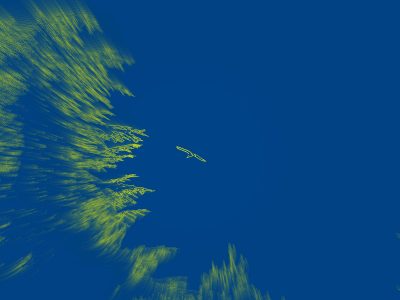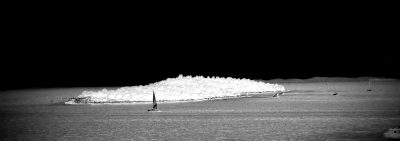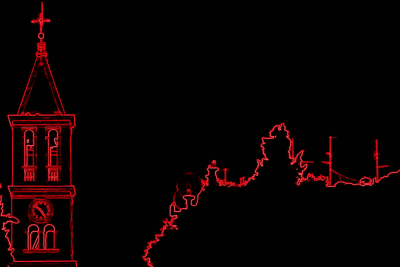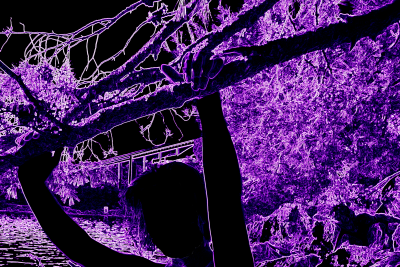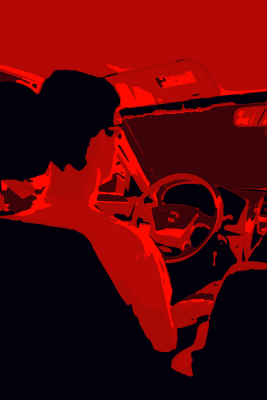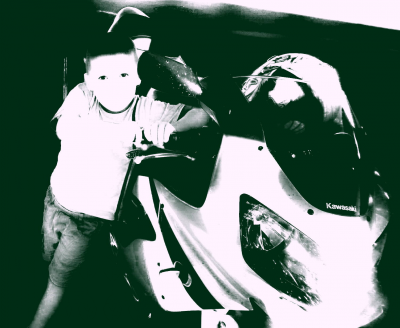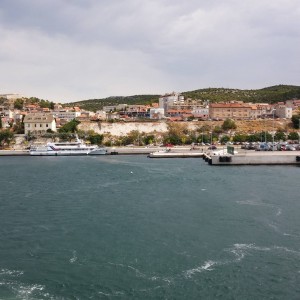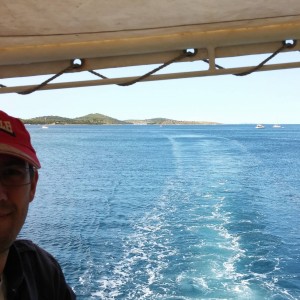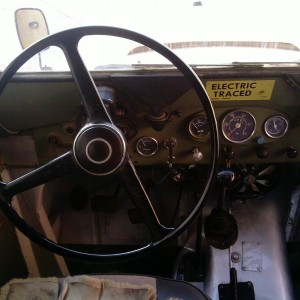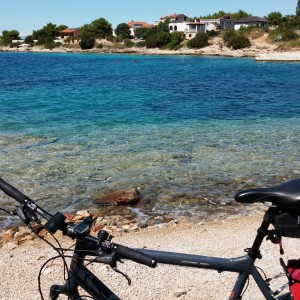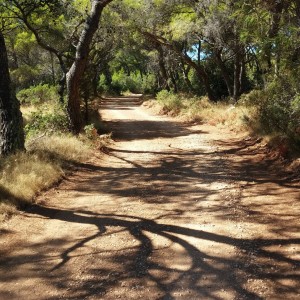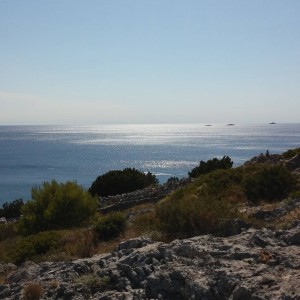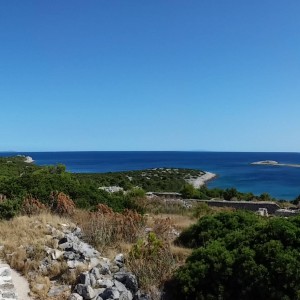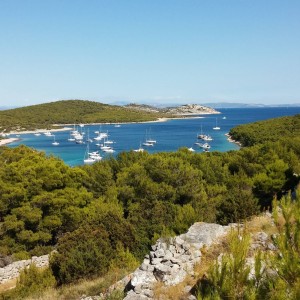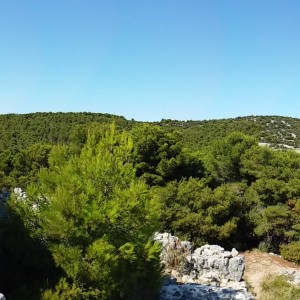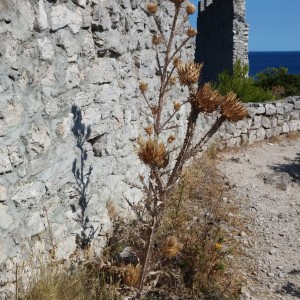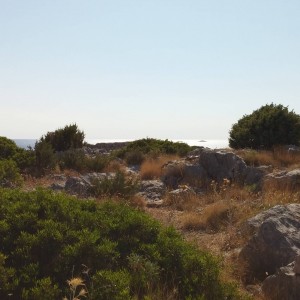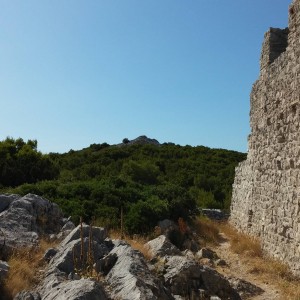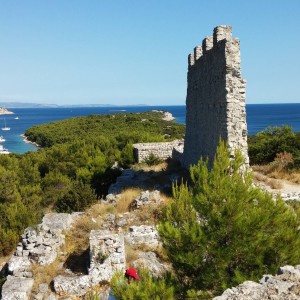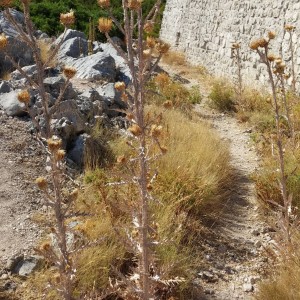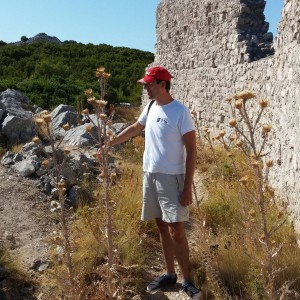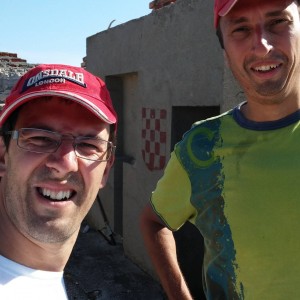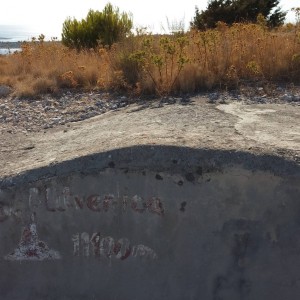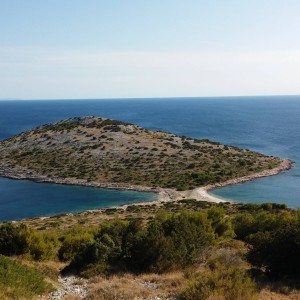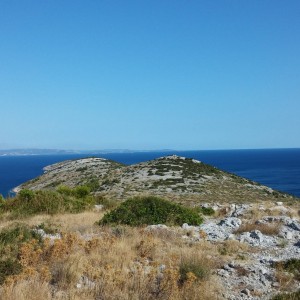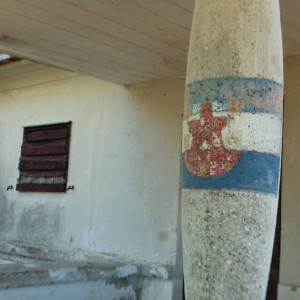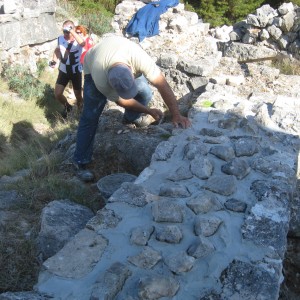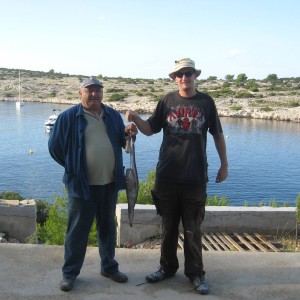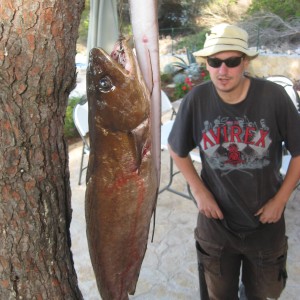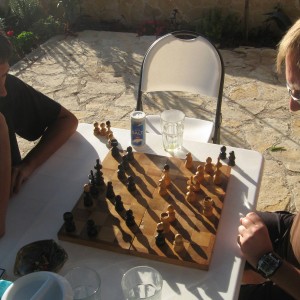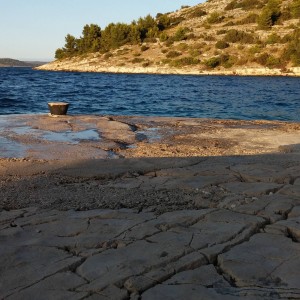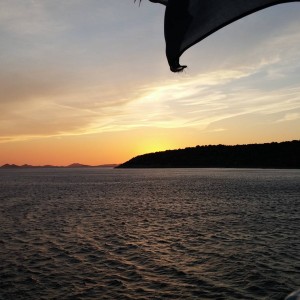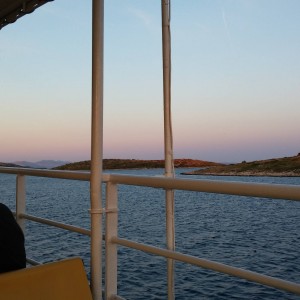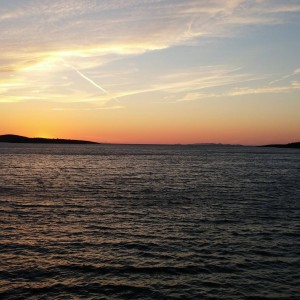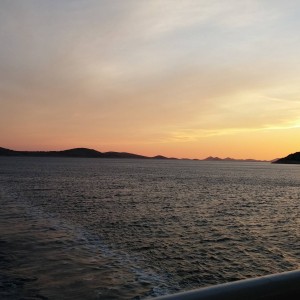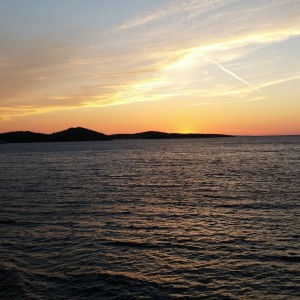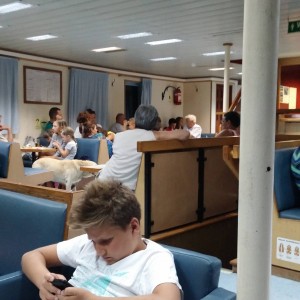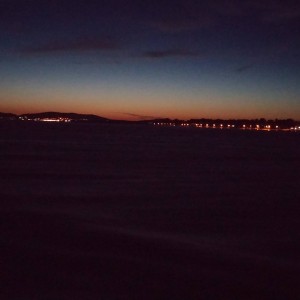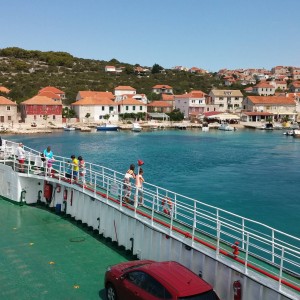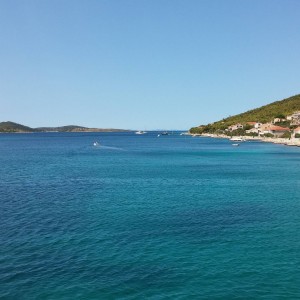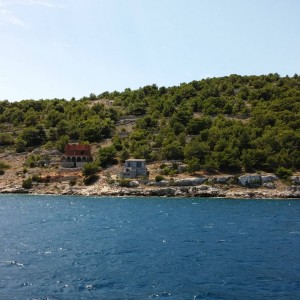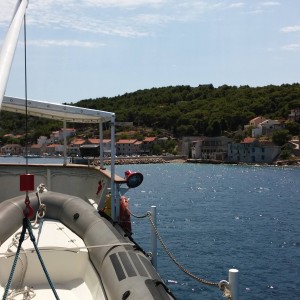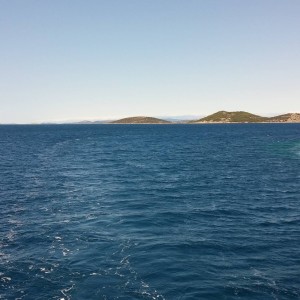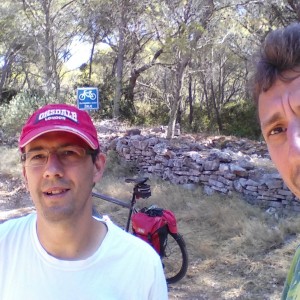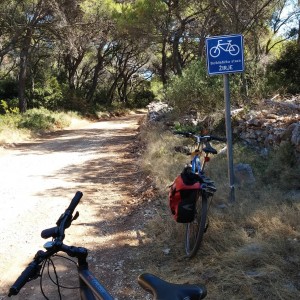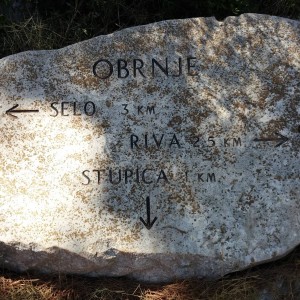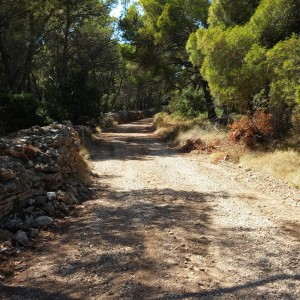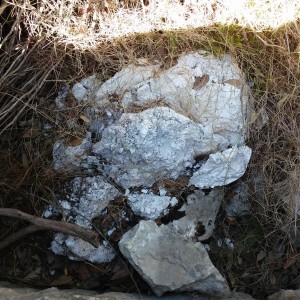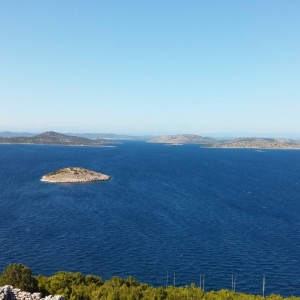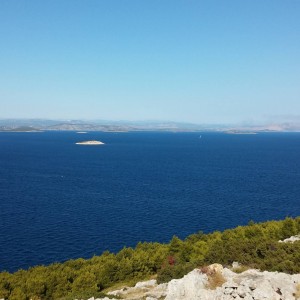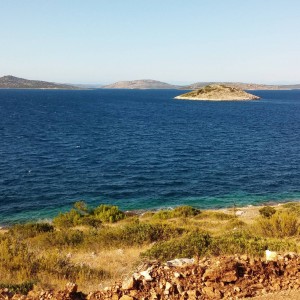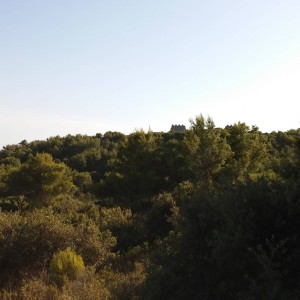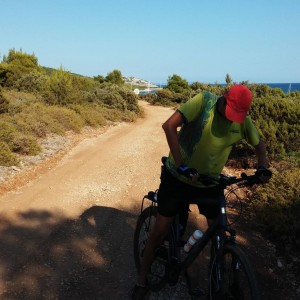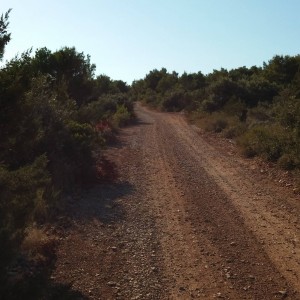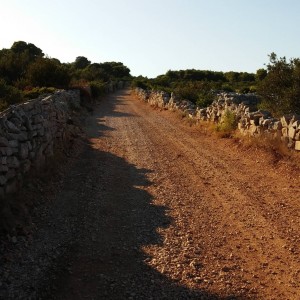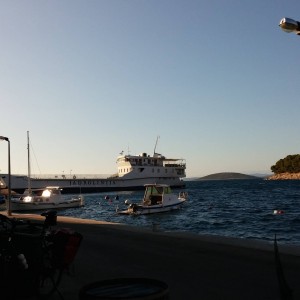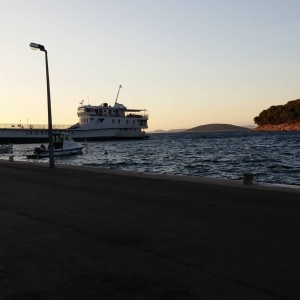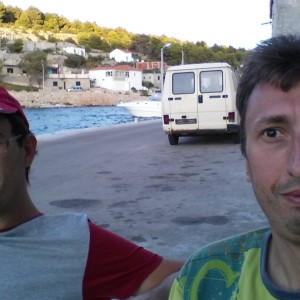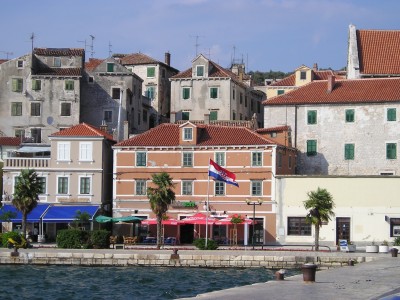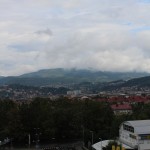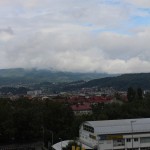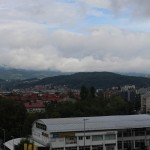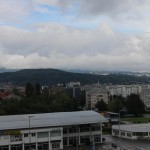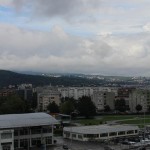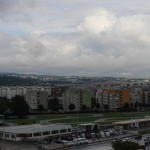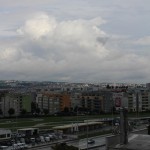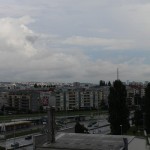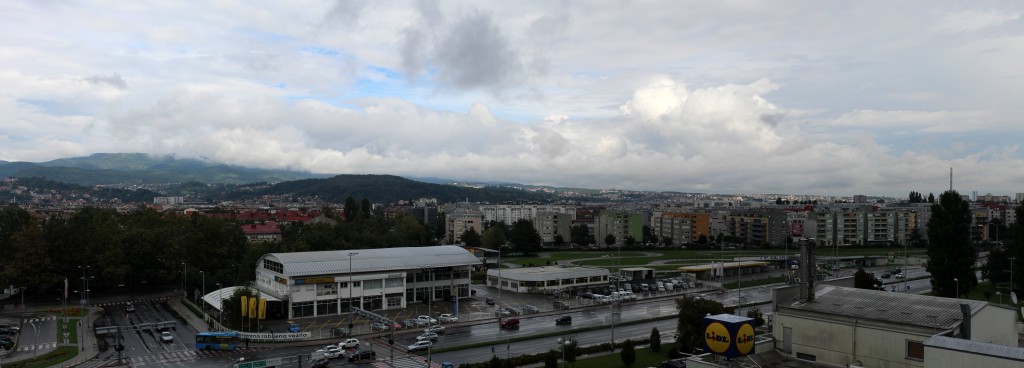A collection of random edits of photos, some slight pixel rearrangements etc. I’d like to say that each picture represents something meaningful, but it doesn’t.
Category Archives: Photography
Access your photo collection from a smartphone
The wonders of the smartphone. For us tech savvy people the current modern variant of the smartphone is pretty neat. You can navigate across the globe with the maps, you can of course listen to music or watch films, take photos, view photos, surf the net, etc. As most parents, I too love to talk about my kid, and I like showing a couple of pics to friends.
In earlier posts I was talking about managing, keeping your collection safe, organized. What if you find yourself in the situation that you want to show a specific picture to someone? You can’t expect to have all the photos you’ve taken over various devices to be present on your smartphone. This seemed like a good idea actually, to have access to all of your pictures on the phone.
My wishlist:
- The pics themselves be somewhere on the internet, or my home computer so I can connect via a dynamic DNS service.
- The pictures are scaled and quality lowered, so I don’t spend a lot of mobile data viewing unnecessarily large photographs, ~100 KiB per picture or even less. It should be fine for a smartphone display.
- It would be extremely nice if the whole thing is encrypted end to end.
Turns out there are a couple of solutions already present on the market. One of them is Plex. A cursory glance at the website seems to indicate that it has what I want. There were some issues, however. First off, it’s a totally closed, proprietary bullshit service. How does it work? Supposedly you install the Plex media server on your computer, and with a client on your smartphone you connect directly to your library of photos, videos and music on your PC. Someone even packaged it for Arch Linux. The entire package is over 130 MiB in size. Unfortunately, this service is a bit of an overkill for my requirements. It’s an entire platform for you to play your mostly pirated stuff from a remote location. Sure, that makes sense for some people, but all I need is a gallery viewer and to somehow fetch the photos over the internet.
My first thought was, do they even encrypt this traffic between the phone and your home computer? Of course they didn’t. They do now, but the encryption was implemented a couple of months ago. Seems they even pitched in for a wildcard SSL certificate of some sort. If it’s a wildcard certificate for their domains, that means they proxy the traffic somehow. But considering their track record with basic security, ie, having no encryption of any kind, I’m not so convinced they actually encrypt the entire stream from end to end. To be fair, they have to support a lot of shady devices, like TVs and such, and there’s no telling what kind of CAs do these devices have and what kind of limitations are imposed.
OK, so I gave up on Plex, there has to be some kind of simpler solution. I noticed that an app I was already using, QuickPic, has native support for Flickr, Picasa, some others, and Owncloud. I really don’t want to give all my photos to a nameless cloud provider, but Owncloud, now that’s something. I have a budget dedicated server in Paris, and I decided to give it a try. I won’t go into details on how to install Owncloud. I’m using the Nginx webserver with PHP-FPM. Since the server isn’t exactly mine, and I have issues with trusting private data to anyone, I decided to use a loopback device on the server with a bigass file, and encrypted it with cryptsetup and is mounted to serve as the data directory of Owncloud. This way, once the server is decommissioned or a disk fails, no one will be able to see the content from the Owncloud data directory.
I don’t really want to go into the Owncloud installation. It’s relatively simple, it supports MySQL, Postgresql, sqlite, needs a reasonably recent PHP version and a webserver like Apache, or Nginx. So all I had to do now is prepare the photos, so I can upload them. And once again, Linux comes to the rescue. First, I copied the entire library to somewhere so I can test out the recoding mechanism. All my photos are in an extremely simple hierarchy. YYYY-MM, so that’s 12 directories per year. So:
for i in * ; do (cd $i; mogrify -auto-orient -quality 55 *); done
After that it’s pretty much as you’d expect. Upload the photos via the Owncloud client for Linux which works pretty much Dropbox. Once it’s uploaded you can setup QuickPic on your android phone to connect to the Owncloud instance. And that’s it, you can now access your full photo collection, you’ll just have to periodically add new pictures into the mix. Keep in mind that Owncloud generates the thumbnails on the fly when QuickPic requests photos, which is pretty cool. It’s not blazing fast, but it’s acceptable. The thumbnails are then cached in the Owncloud’s data directory, meaning that it will be a lot faster the second time you view the same directory.
I’ve also setup a script that automatically recodes all the images I take from my digital camera and uploads it to the server. That way I can have access to all the latest photos, I can view them from anywhere. Everything is reasonably secure, under your control.

A trip to the island of Žirje
This post recounts the day when I took a trip with my brother on the 31st of July, 2015. We always had a wish to go to Žirje, just to visit it. It’s located about 22 km southwest from the town of Šibenik, and is pretty much only accessible by ferry or a catamaran. They have regular lines all year.
My brother visits me and my family during the summer, so we get to hang out for a while. This time he brought his bike along with him, so we decided to make it a biking trip to Žirje.
The weather didn’t really inspire a lot of hope, it was an almost overcast sky, with raindrops swiveling around occasionally. Still, we went to buy the tickets, stock up for everything and catch the ferry. On the ferry we proceeded to eat some of the food we had bought earlier. This is a pretty scenic ride actually, and it scenically takes almost 2 hours. But hey, in good company, that’s not so bad. You get a little bit out of your routine, and experience something different whilst stuck on the ferry.
It was windy, but fortunately the clouds were letting up and the day it was actually starting to feel like a regular summer day. Žirje is the furthermost island in the Šibenik archipelago, not counting a tiny island Blitvenica that’s technically even farther than Žirje. This wasn’t my first time taking this ferry to the island. I’ve ridden this exact same ferry at least two or three round trips. I was a part of a crew that was led by the city museum to restore parts of an entrance to an old fortress that’s located on the south-eastern side of the island.
Finally we get off the ferry, the last preparations are taking place – it’s time to roll. The island itself is very peaceful as there aren’t that many people around even though the summer tourist season is at its peak. Žirje is populated with people that own houses and live in Šibenik and come to the island during the weekends, a lot of people rent and some people live year-long. There are people outside of the local convenience store that are chugging beers, elderly sitting and chatting. We start biking, first off we have 50 or 60 meters of uphill climb, but this is nothing. The temperature is almost ideal, very few cars around with wind in our hair, we enjoy the island’s serenity.
When I was working on the island the museum rented a small prefab home that is usually used over the summer for tourists. The owner spoke of how they got the home there in one piece on a huge truck that had a crane and simply placed it on the pre-prepared concrete foundations with working power lines, septic disposal, and of course water. We brought our materials on a truck, concrete, lime and sand. We unloaded all of this at the base of the fortress and hired a local man with a 4×4 Ford jeep of some sort. The car was manufactured in the 1940s and was still in working order more or less. The jeep managed to climb the uncomfortably steep rocky path, and it took us about 5-6 trips to get everything near the entrance to the fortress. The path itself was uncomfortable even on foot. Each morning we’d get up, drive to the fortress which was a couple of kilometers away, place some rocks and wait around until 1PM to go back to the house and have lunch that the boss was cooking for us. A pretty sweet deal, and we were getting paid for it too.
We went on to find a beach to take a swim and refresh ourselves. The sea was very warm, and there was absolutely no one around. I’ve not been too many times on a beach that had a body of water that was this clean, translucent, colorful. There were some waves about, and the sea bed was very natural, but this meant very sharp underwater reefs combined with all the perturbations, we had to be careful not to get injured with our bare feet in the lovely sea. After drying up a bit, we changed back to biking clothes and went on to explore the island some more. We had about 6 or 7 ours all in all, so we couldn’t afford to lounge on this wonderful beach for too long. We got on an unpaved road which are plentiful on the island, and are actively maintained by the local population and various civic departments.
After some riding we decided it’s time to head out to the fortress. Unfortunately, the fortress itself is completely unmarked on the island, and isn’t really visible almost right until you’re on top of it. Since I was working there for a couple of weeks, I knew where it was. We were cycling on beautiful unpaved roads, with the occasional stop to have some cooled beer we held in our saddle bags. Since it was hot and we were physically active the beers would really hit the spot. We left the bikes where it was appropriate and went ahead to climb the path that the old 4×4 jeep managed to get through. The path was completely unrecognizable. It’s incredible how much vegetation reclaims the area that was cleared away so we can actually go through with the jeep. It’s a 5 minute walk or so, not too steep. The view from the fortress is incredible. You can see the open sea with Italy on the other side of it. Of course the curvature of the Earth is concealing Italy’s mainland. Since the visibility was perfect, various distant islands were just barely visible. Geeks that we are, we have maps on our LG G2’s (we have the exact same phone) and were trying to figure out exactly what island we were seeing.
We took our time on the fortress. I was talking about stories the mason was telling me while we were working there. The man did a lot of archaeological excavations in his time, and this wasn’t my first time working with him. Aside from a big wall, only the foundations of the fortress remain, you can make out the rooms. Incredibly, the fortress had plumbing, and even heating. You can see the canals that were running between the rooms. Fascinating stuff, I can picture in my mind the people that are long dead now that had lives, jobs, responsibilities that were walking around this same place. We’re at least 1500 years apart. Who knows how their workday went on in this fortress. They had names, they had girlfriends, some of them were gay, some of them were unhappy, some of them had love problems, while others were just great and most likely all of them stared at one point or another at the same infinitely straight line of the open sea. The history of the fortress is relatively wacky, as it turns out this particular fortress was built and used at the end of the Byzantine power in the early 6th century century. After Justinian’s death, the funding and supply chain stopped and the fortress was abandoned. It’s estimated that the fortress was operational for 15-20 years, and the fact that no soldier graves were found around the fortress seems to support that. The fortress was one of many that was placed around the Adriatic sea to secure trading lines between Italy and Byzantium.
Upon leaving the old abandoned military installation we went to the next abandoned military installation on the island. This one is slightly newer, dating back from the Yugoslav People’s Army. It’s located a couple of kilometers of dirt roads and is on a hill, maybe a hundred meters of elevation or so. We braved the hill without stopping, it was pretty steep but luckily paved so it’s that much easier. We actually encountered a car while going uphill. Funnily, the car had New York license plates. These people were from far away. They were probably visiting their ancestors’ homes, as there was a lot of emigration from the island and in general from these areas to the new world at the turn of the 20th century and later. There was a surprising amount of hikers going around the island, mostly foreign people.
The man I was working with was in the army when the base was actually functional and he was serving here. It had a big ass artillery mounted, and some anti-aircraft guns among other things. This was designated to defend against incoming ships, as it was strategically placed. The cannon even had a pivotal role in our own independence war, it was used to shoot at the incoming tanks that were coming in to the Šibenik bridge threatening to attack Šibenik. These were hairy times, and this guy was here when it all happened. The stories about that war are almost always weird and not objective, but this man wasn’t prone telling bs as much as I could gather. The gun, and all of the equipment were stripped away in the nineties after the war was over. You could see only the protruding wires at places. This hasn’t been functional in some time, vegetation is growing all over the place, slowly reclaiming it. Just like the Byzantine fortress.
We came down from the military base, and went to a road that led to the army barracks. It too is mostly unused, however some people seemed to have establish a place for themselves nearby. The entire walkway between the barracks was completely filled with the stuff that fell from the nearby pine trees. The whole place had a serene quality, the stony floor looked undisturbed for years and years. We took out another beer and a banana, chatted for a while. Suddenly a big dog started barking from the house above. The dog is so used to the solitude, or no one coming near the house that it took some time for him to actually hear us and start barking. This was our cue to leave, apart the incessant barking we were ready to move on. Hunger had started to set in. It was time to find some food, and we were headed back to Muna, that’s where the ferry lands.
After work and after lunch we’d drink some wine and play cards, or listen to music on the computer. The house didn’t have electricity from the grid, but from solar panels. The panels were basically good enough for some light and to charge our phones – if it wasn’t cloudy during the day. I was texting with my girlfriend a lot, and my coworkers made fun of me for it. We played a lot of chess too, and just talked a lot. They called me Vladimir the invincible since the three of them could never beat me at chess. I’m a below average player, I guess they were even worse than that. During the night we’d set out baits for conger eels, 5 or 6 of them. Most of the time we’d catch something, and sometimes nothing. The nights were great, it was so incredibly quiet. There was no light pollution or pollution of any kind in the air. The center of the Milky Way galaxy was clearly visible, the giant disk of stars, dust, planets, black holes was clearly visible in the sky. The vast distance is difficult to comprehend, and I had a first class view of it. You can never really see it in cities or even smaller settlements because of street lighting. I haven’t had a clear view of the Milky Way ever since then.
Muna is a very small settlement, it has a shop, a ticket shop for the ferry and houses, a restaurant or two. We sat down at one of the restaurants and ordered coffee for starters and asked them for the wifi password. The prices seemed a bit high, so we decided to try our luck elsewhere. We used the wifi to find information about restaurants on the island. There was a restaurant a couple of kilometers away. The reviews of the place were good so we paid for the coffee and left. The restaurant was somehow farther than we had imagined. I ran into two friends from Šibenik. One of the women has a family house there and they were lounging about. It was unusual for me to bump into anyone I know on this island, but it’s not so far fetched since I know she has a house there, but I wasn’t thinking about her the whole time. At last, we found the restaurant, and it was actually open. I went in, Hrvoje followed me a minute later, he was securing the bikes. A woman was eating something at one of the tables, plenty of room for us. The owner’s son approached me and told me he was sorry, but they’re all full and cant’t really feed us. Hrvoje came in and I told him sarcastically that there’s no room for us, even though there’s no one in the restaurant. He further explained that they had an event later on with many guests. We had an hour and a half until the ferry departs. An older man, obviously the owner came and said we could sit down, but the time frame was unrealistic for them to cook us anything. Oh well, we’ll just get something to eat at the store.
A decision was made to go for another swim in front of the restaurant. We had a lot of time on our hands, and Muna isn’t too far away. The sun was slowly setting, but it was still warm. The sea was at an ideal temperature. We jumped, swam and dove a lot. I really wanted to stay some more, but time was slipping away and the ferry wouldn’t wait for us.
Even though the sea was basically perfect. I’m not sure what it was, but that’s one of the best times I had at a beach. I’ve been to the beach countless times that summer, but that particular time was simply amazing. The unrelenting passage of time forced us to vacate the pier and start our trek towards the ferry. All this island beauty left us really hungry now. We got into the convenience store to get something to eat. Anything to eat, really. The nice ladies at the shop were sympathetic to our cause, but they had no bread to sell us. One of them must have took pity on us, because she gave us a loaf of bread that was reserved for someone else, but they never showed up. Great, we bought some yogurt, some cheese, some salami and went to the ferry. We got on board and ate it. The entire day of cycling on nothing other than a sandwich at the start of the day, a couple of bananas and some beer. We lounged around the outside deck and watched the flickering lights of the settlements nearby Šibenik. The sun was going down fast.
Everything is sort of slower on islands in general, especially this one since it’s so distant. Žirje is basically dead. I don’t think a lot of people live there, and those that do are elderly. This used to be a bustling port, an island with strategic importance and a population to match. The island is now sparsely populated, and apart from the tourism there’s nothing job-wise. The connection to Šibenik is not all that great which surely plays a role.
The ride back was uneventful. The sun has completely gone down and we’re back in town. The bustling streets, the loads of foreigners walking about the streets. It’s summertime in Šibenik, and it really shows. They bring in hard currency and helps the economy, and it can’t hurt to have a lot of foreign people visiting. Tourism always reflects well for local businesses and practices, it promotes a bit of a metropolitan and urban culture to our small town. Šibenik used to be a powerhouse in terms of various industries, economy, tourism etc. Over the decades Šibenik’s influence and power dwindled, Split and Zadar took over as more important towns. The bike ride to home took another 15 minutes or so. We still had energy. We got something to eat when we got home, and got ready to go to a concert. A legendary Zagreb punk band was coming to Šibenik to play. We were very tired by the time the concert started. The music seemed bland and outright annoying, and the light show was killing me.
It was really time to call it a day around midnight. We came to the concert by car which was parked relatively nearby. I bumped into a couple of more friends. Hrvoje was grumbling that I know a lot of people and bump into someone all the time, and accuses me of spending too much time with each one. I always like to chit chat with people I haven’t seen in a while. You catch up fast, but it takes at least a couple of minutes.
I like the fact that Žirje is so unknown, and that pretty much only locals go there. The island is perfect for biking, and it might even be a better idea to rent something there and stay a couple of days to enjoy it fully. There are no discos there, no fancy restaurants, just the island and its many beaches. I definitely recommend everyone to visit the next time they’re in the area!
This is a picture dump with captions from the trip:
Handling large sets of photographs and videos
In 2003 my father bought a digital camera for the family. It was an Olympus C-350 Zoom, 3.2 mpix, 3x optical zoom, a 1.8″ LCD display. At that time, at least here in Croatia, having a digital camera was fairly rare. I’m not saying I had it first in my city, but it wasn’t as commonplace as today. This was such a leap from anything that you owned. You could actually take a picture and upload it to the computer. And the image was usually great if the light conditions were optimal, of course. Indoors, and with low lighting the images were terrible.
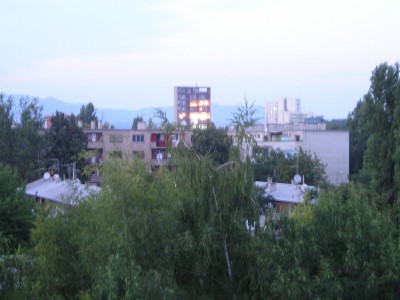
This camera wasn’t cheap. It cost a little less than $500. For Croatian standards of the time it was a fair amount of money. Still is actually, but that is the minimum you have to spend to have a decent camera, it was like that then, it’s still like that now.
I was making pictures of the town, taking it on trips, documenting everything. Since I was always a computer enthusiast I was beginning to worry, what if the hard disk failed? I’d lose all of the photographs I had acquired. There are people that seem to underestimate the importance of photos. You take the photos, they’re nice, but they’re not that valuable right at that moment. Looking back 10 years or more, suddenly the pictures become somehow irreplaceable. They’re a direct window into your past, not the blurry vision of the past that most of us have, but something concrete and immutable. I think this especially applies when you have kids, you’ll want the pictures safe and sound, at least for a little while. Everything gets lost in the end, but why be the guy that loses something that could be classified as a family heirloom?
How not to lose the pictures and how to organize them
Here’s a high-level list of what I’ve found to be good practices, to keep it organized and safe:
- A clear structure of stored photographs/videos. I’ve found that a single root directory with a simple YYYY-MM does the trick. I dislike categorizing pictures with directory names like
summer-vacation-2003,party-at-friends-house-whose-name-I-cant-rememberor something to that effect. I think that over time, the good times you had get muddled along the way, and you’ll appreciate a simple year-month format to find something or to remember an occasion. It’s like a time machine, let’s see what I was doing in the spring of 2004, and you can find fun pictures along the way. - This goes without saying, backups. Buy an external disk, they go cheap, and you can store a lot of photos there. Your disk can die suddenly and without notice, and all your pictures can simply vanish, never to be seen again. Sure, son, I’d love to show you pictures when I was young, but unfortunately, I couldn’t be bothered to have a backup ready and all the pictures are gone.
- Disaster recovery – imagine your whole building/house burns to the ground. You get nothing but rubble, and although you were meticulously syncrhonizing to your backup every night to an external HDD, everything is gone. Or more realistically, your house gets broken into and they steal your electronics which contain data that is basically irreplaceable. Create a tarball of all your photographs/videos, encrypt it with a GPG key or passphrase, or with a simple SSL encryption and upload it into the cloud of your choice. Even in the event of a burglary/arson with a regular snapshot of about once per two months, you’ll still be able to recover most of the data when you rebuild your house or buy a new computer in the event of a burglary.
- Print out a yearly compilation of pictures that you like at your local photo lab. Just pick like 40 of the best, with whatever criteria you deem fit. Who knows if the JPEG standard will be readable in 30 years time, but you can always look at a physical picture you can take with you.
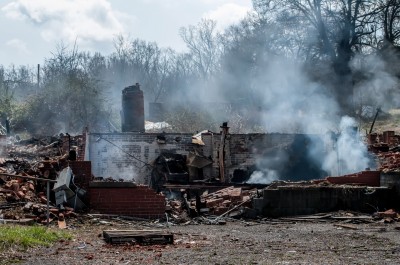
Photos
Most digital cameras, be it video or still frames, have pretty lavish defaults with the image quality. This is a very good thing. I like to get a source file that is close as possible as the device has serialized it to a file. Still, if you take a lot of pictures, you’ll quickly notice that it’s piling up. The first thing to do is delete the technically failed ones. Do not delete the pictures where you think that someone is ugly on it, it may end up great in a certain set of circumstances. You never know.
These days even the shittiest cameras boast with huge pixel numbers, like 10, 15 mega pixels or more with a tiny crappy lens and who knows what kind of sensor. Feel free to downsize it to 5-8 mega pixels, with a JPEG quality of 75-80. Quickly you’ll see that now your images consume a lot less space on the HDD, I’m talking about 30% of the original photo, sometimes even less. I spent a lot of time trying to find exactly how the image is degraded. Some slight aberrations can be seen if you go pixel peeping, but screw that, the photos might have sentimental value on the whole, and you’ve saved a lot of hard drive space that you realistically have available. I recommend using the Imagemagick suite for all your resizing needs. Create a directory where you want the recoded images, like lowres:
$ mogrify -path lowres -auto-orient -quality 80 -resize 8640000@ *.jpg
You can set the number of pixels, in this example it’s 8.64Mpix. Choose a resolution and go with it. I generally use 3600×2400 which is 8640000 in pixels. Mogrify is great for this task, it can encode the images in parallel, so if you have a multi-core computer it really shines since the operations involved are very CPU expensive. You can omit the -path switch, and the files will be processed and placed instead of the file, but be careful as this WILL overwrite the original file(s). Don’t test around on your only copy of the file. You can use the generally more safe convert which takes the same argument with a slight difference, it needs the INFILE and OUTFILE argument:
$ convert -auto-orient -quality 80 -resize 8640000@ mypicture.jpg mypicture-output.jpg
or
$ for JPEGS in *.jpg ; do convert -auto-orient -quality 80 -resize 8640000@ $JPEGS $JPEGS-out; done
The problem with this is that you’ll then have a bunch of IMG_xxxx.jpg-out files. This is the longer way around, but once you’re satisfied with the result, delete the original jpeg files and rename it with a program that mass renames or you can use a perl script called ren, my brother and a buddy of his wrote a long time ago and it still works great for a number of circumstances:
$ ren -c -e 's/\-out//'
This will rename all the files that have the -out to empty string, deleting it from the filename essentially. But this is the long way around, I suggest using mogrify. Mogrify had a very very nasty bug. At one point they decided that it would be cool if you have an Nvidia card and the proprietary drivers installed it would use the GPU for all your encoding needs. That sounds great in theory, but I actually had an Nvidia graphics card with the drivers properly installed. How do I know that? Complex 3D video games worked without issues. And guess what else? It didn’t fucking work. It simply hang there, and didn’t do anything, it would never finish a single image. Did I mention that you can’t fallback on the CPU so easily, I mean at all? I googled around, and multiple bugs were filed. I just tried mogrify now when writing this post, seems they have finally fixed it, and I may go back to using it again, instead of unnecessarily complex python scripts that called concurrent converts which number was based on the number of your physical cores.
Video
A nice feature of modern cameras is its ability to record decent video and audio. The cameras mostly use a very good quality preset for the recordings. On my current SLR camera I get 5-6 megabytes per second for a video. Not only that the files are monstrously huge, they also are sometimes in non-standard containers, have weird video and/or audio encodings. You should really convert it to something decent:
$ ffmpeg -i hugefile.mov -c:v libx264 -preset slow -crf 25 -x264opts keyint=123:min-keyint=20 -c:a libmp3lame -q:a 6 output.mkv
This produces a pretty good quality video. I am strongly against rescaleing the video in any way. Use the original resolution, the displays are advancing at a stable pace, you don’t want to unnecessarily scale down the resolution. You can change the quality with -crf from 18-29 are reasonable options, I discussed it in another post in more detail. Also, it decreases the file size by a factor of 15 or more, virtually without perceptible visual loss. As an added bonus you mux it into an open source container with the h264 family of encoders and the venerable mp3 format for audio. That should work on most computer players by default as well as standalone players hooked up to a TV.
I started this post as more of an in-depth technical overview how to store and encode your multimedia and backing it up. But instead I chose to give a high-level overview of what worked for me over the years. Make backups regularly, have a disaster recovery option present if at all possible, and print out some yearly photos. It’s fun to look over the physical pictures, and can be good fun showing it to visiting friends and family. When deciding how much to shrink the files, always keep in mind that you should compress them as much as possible while keeping the subjective perception of the quality as close as possible to the original. What I mean to say, don’t overdo with the quality settings. What matters is how much space is your archive consuming right now, and how are you able to cope with that amount of data.
Data loss is commonplace. Hard drives fail, do not lose 10+ years of photographs because you didn’t have a decent backup. It’s not so hard. Do it now. Don’t lose a part of your personal history, it’s priceless, and cannot be downloaded from the internet again. Always encrypt your stuff before uploading to the ethereal cloud. Maybe you have sensitive pictures that you wouldn’t want anyone else casually looking over just because they happen to be the sysadmin. You wouldn’t make the same kind of privacy breach in other parts of your life, would you?
Match file timestamp with EXIF data
Over the years I’ve collected a lot of pictures, coming close to 20000. Most of these pictures have the exif metadata embedded in the JPEG files. Alas, I was careless with some of the photographs, and when copying over from filesystem to filesystem, creating backups etc., the timestamps got overwritten. So now I had loads of files that had a timestamp of 22nd January 2010 for example. They were most definitely not taken at that date, but rather they were copied then and no preserve timestamp flag was enabled at the time of the cp issued. I googled for a quick solution to my problems, but I could not find anything that would be simple to use, and not clogged up with bullshit. So, I cracked my knuckles and delved into the world of Python:
#!/usr/bin/python2
# You need the exifread module installed
import exifread, time, datetime, os, sys
def collect_data(file):
tags = exifread.process_file(open(file), 'rb')
for tag in tags.keys():
if tag in ('EXIF DateTimeOriginal'):
return "%s" % (tags[tag])
for file in sys.argv[1:]:
try:
phototaken = int(datetime.datetime.strptime(collect_data(file), '%Y:%m:%d %H:%M:%S').strftime("%s"))
os.utime(file,(phototaken,phototaken))
except Exception, e:
sys.stderr.write(str(e))
sys.stderr.write('Failed on ' + str(file) + '\n')
Basically it takes each file, reads the exif metadata for photo taken and invokes the os.utime() function to set the timestamp to that date. You’ll need the exifread module for Python, this is the simplest one I could find that can do what I needed it to do. I hope someone will find this script useful. You can start it simply with $ exify *.JPG. You can download it here.
Creating panoramic photos
You might have seen some nice pictures around the web that have been taken with a simple compact camera, but they have an astonishing amount of detail. You may wonder, how do they get such a nice, detailed picture? They simply stitch them together. How, you might ask? Do I need to shell out hundreds of currency in order to obtain the latest from Adobe and the likes? Nope, once again free software to the rescue, and it’s incredibly easy!
Step 1
Take the pictures. Bear in mind that they need to overlap, which should really be obvious. A good rule of thumb is to have at least 50% of the picture to overlap with the previous picture. Remember, no one says you can’t take the photos in the portrait mode. It would be a good idea to lock the white balance to a reasonable preset, so the camera doesn’t decide that picture has gone from “cloudy” to “sunny”. Although, not really necessary, as hugin has very advanced features to compensate. Also, you’ll want to lock the exposure so it doesn’t vary between the shots. Once again, this isn’t a problem for hugin, but it might improve your panorama. You can stack an arbitrary grid of pictures, for example 2×3, 3×3, 4×2, etc. For the sake of this article, I used the almost automatic on my EOS 100D with a 40mm pancake lens:
I used the portrait orientation for taking the pictures. I just snapped them and uploaded to my computer.
Step 2
Install Hugin that undoubtebly comes with your favorite distro, or if you’re a Windows user, simply download from their website. Now, I should point out at this time that Hugin is a very feature-full and complex software. The more advanced features are beyond the scope of this article, and quite frankly they somewhat elude me. Anyway, before I get too side-tracked, fire up Hugin, click on Load images, then on Align, and finally Create panorama, choose where you want the stitched photo to end up. There is no step 3:
Hugin took care of the exposure and the white balance. You should really use the tips from above, though.
Conclusion
You’ll tell me, but MrKitty, there is wonderful software out there that is waaay better than Hugin, or Hugin is a very advanced tool that you have no idea how to use. Very much true, but the point of this 2-step tutorial is to point out to people that Linux and the associated software CAN be user friendly, and sometimes even more powerful than their proprietary counterparts. I’ve been using Linux for a while now and I sometimes get the question, but why are you using Linux instead of Windows? There is no easy answer. For starters, I work as a Linux sysadmin for a living, so that’s one, though I don’t really need anything more than Putty. It’s the little things, stuff like Hugin, it’s the plethora of programs that are available with your friendly package manager, the ability to write simple code without the need for big frameworks and the like. Try looping through a couple of files and doing something on Windows. You need specialized software for every little thing you want to do.
But MrKitty, you’re a power user, you sometimes code, you’re a professional in the field, of course you like Linux better! Well, I don’t really have anything against Windows, or Mac, or whatever. But I think everyone is forgetting just how much Windows can be a pain in the ass. I won’t even go for the low shots like BSOD.
OK, forget BSOD, there are other stuff that Windows lovers might forget. I’m sure everyone cherishes those sweet moments when you’re battling with drivers. I used to fix computers for money. You wouldn’t believe the stuff I would see. The latest one, a colleague of mine asked me to help him out with a mobile USB dongle. The laptop was running Windows 8, I think. Wow, I really lost the touch with the new Windows, in my mind Windows XP is the latest and greatest. Took me a while to actually find the control panel. OK, the drivers were somehow screwed up, even though Windows 8 was supposed to be supported. There was enough signal, the connection was active. Nothing was loading. Pinging 8.8.8.8 seemed to work, but resolving anything did not, even though the DNS settings were correct. A couple of hours of headbanging and googling revealed a nice forum in Polish with people with the exact same problem, and to my surprise there was a solution at hand. A new and improved driver download from somewhere, creeping at a nice 3 – 10 kilobytes per second and it worked, after tweaking the endless carrier-specific options. So yeah, Windows are really user friendly. I have no idea if it would work on Linux.
Anyway, my mother, age 69 is using Linux and loves it. My wife says she can’t imagine ever using Windows again. :)

